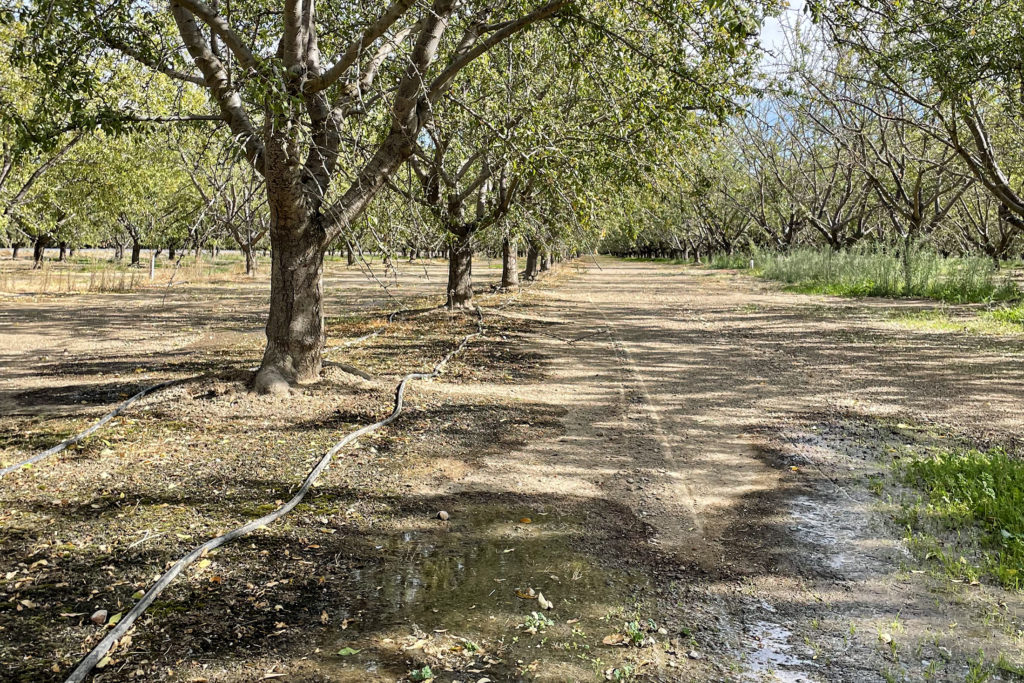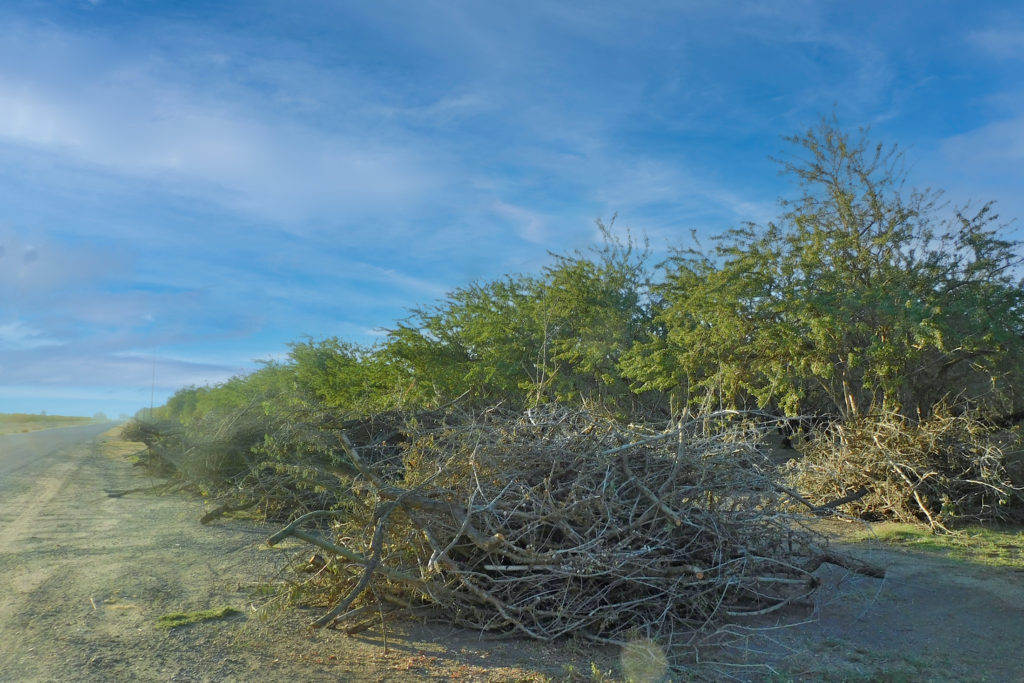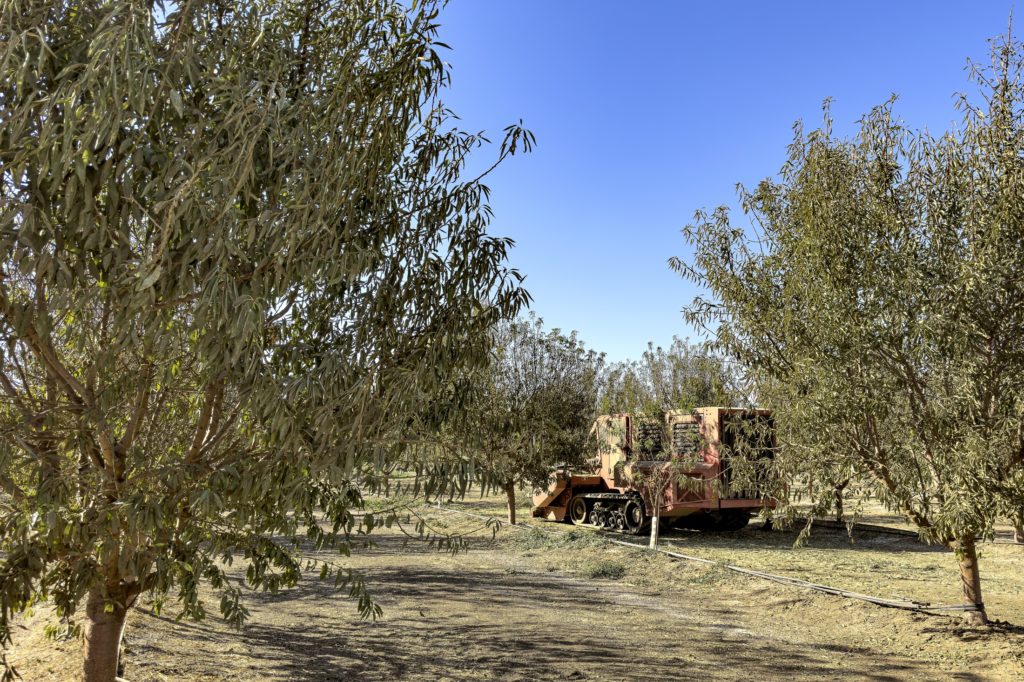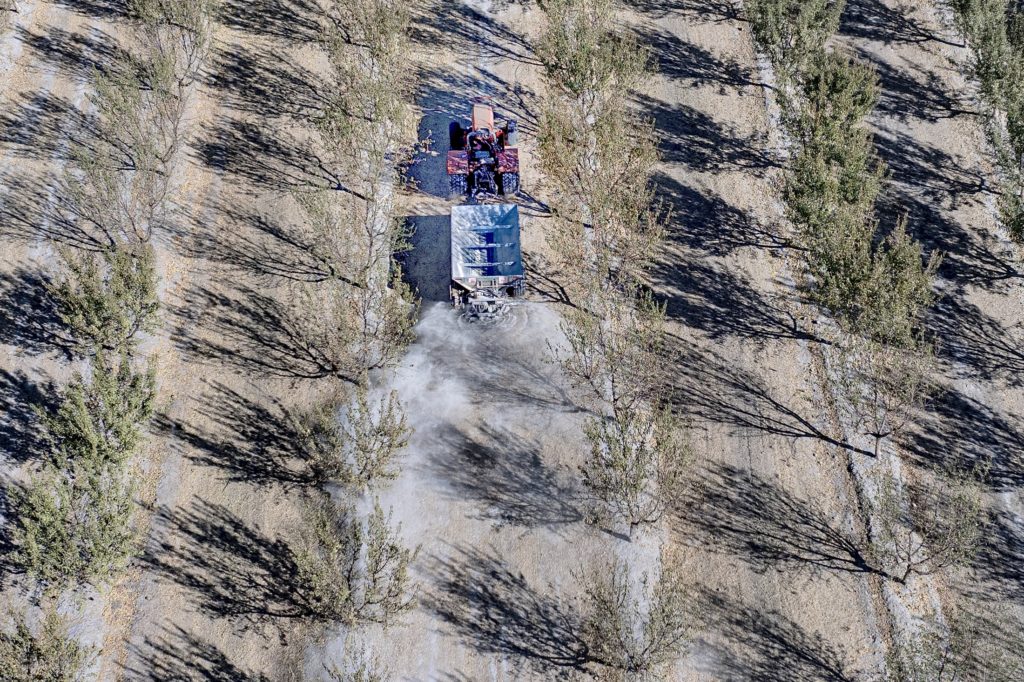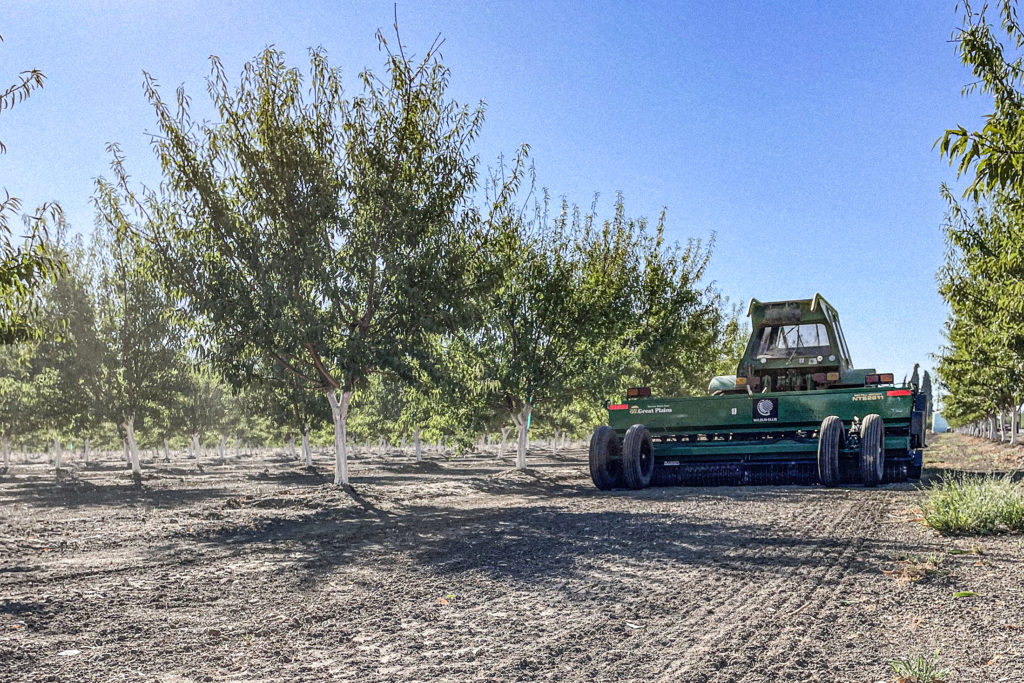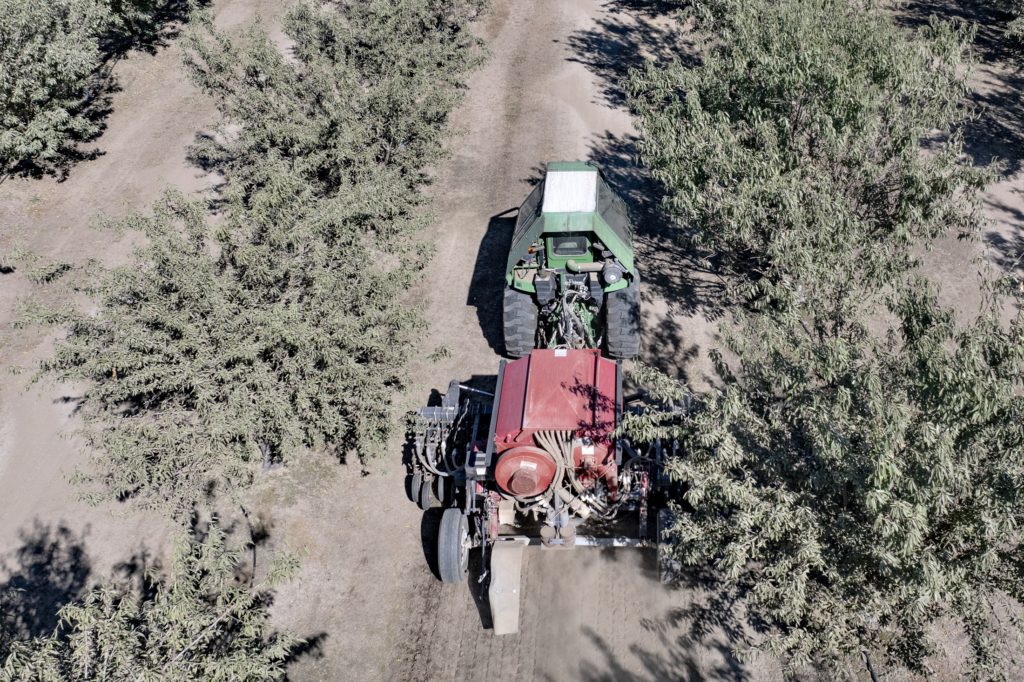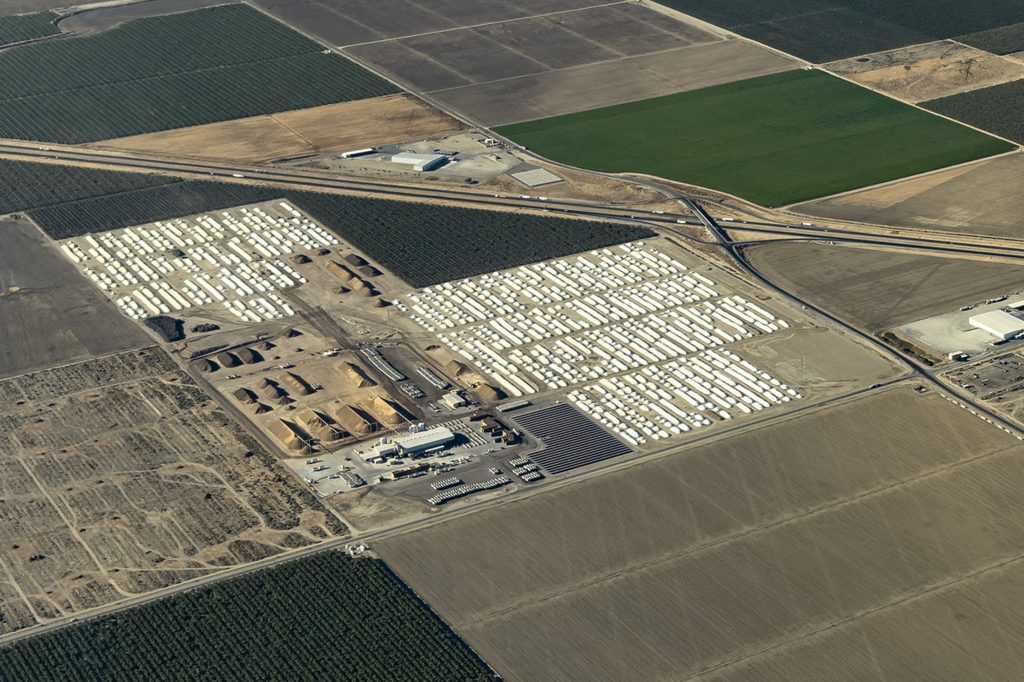
This is the final report of the 2024 crop year, covering the conditions and observations made between Monday, September 30, and Sunday, November 3, 2024. The next report will be posted on or around, Monday, February 5, 2025, prior to the start of the 2025 bloom.
Weather conditions during October provided ample opportunities for the completion of the 2024 harvest. Daily maximum temperatures declined steadily from the unseasonably warm levels just over 100 degrees at the start of the period, dipping into the lower 70’s and upper 60’s by the first of November. Morning lows followed a similar trend, with readings dropping from the upper 60’s to the upper 40’s and lower 50’s. Weather forecasters called for the first significant rainfall of the season to arrive during the final weekend of the period. However, the weakening nature of the storm produced only light rainfall, with totals reported between a few hundredths of an inch to as much in one-half inch.
We can now pronounce the 2024 crop harvest essentially complete. While examples of late harvesting Fritz and Monterey can be found remaining to be picked up, these plantings are definitely the outliers, planted on invigorating rootstocks that tend to delay maturity. Growers with these orchards could be observed rushing to pick up their crops prior to the arrival of the rain forecast to sweep over the Central Valley in the final days of the period.
Following the excessive kernel damage endured in the 2023 crop, many growers focused their attention on management of their prime nemesis, navel orangeworm (NOW). Mummy shaking and destruction to destroy over-wintering sites, pheromone releases to disrupt mating and ultimately treatments to control adult moths and emerging larvae at hull split were prime activities during the year. However, problematic economics resulted in low input or marginally farmed orchards throughout the Central Valley. These plantings served as a source of inoculum destined to contaminate surrounding orchards, thwarting neighbor’s best efforts to protect their crops.
Growers and observers have reported that the elevated reject levels noted in the early and mid-harvesting varieties have continued to plague late season Monterey, Fritz and even the traditionally low reject Butte and Padre varieties. Significant damage has been caused by the third NOW “flight,” and from Brown Spot produced by Stink Bugs and Leaf-Footed Plant Bugs as they feed on the kernels. Analysis of the data reveals that damage levels are generally lower than the significantly elevated levels endured in the 2023 crop, but greater than was observed in 2017, when growers also endured heavy losses from NOW.
With the completion of the harvest, growers quickly turned their attention to post-harvest requirements. Application of soil amendments and completion of final irrigations prior to the end of deliveries by local irrigation districts have been first order operations. Observers are reporting that growers have begun pruning to train trees in younger plantings, while mature orchards are generally receiving only therapeutic pruning to remove broken branches and those posing safety hazards to equipment operators.
Turning their attention to the orchard floor, scrapers and rollers have been sent into the orchard to eliminate any depressions or mounds created during the harvest. Treatments to maintain weed free areas down the tree row have begun, as well as planting of cover crops to support the honeybees prior to the 2025 bloom.
Observers are reporting that huller/shellers began running previously stockpiled product during the period as the flow of field-run loads from the orchards diminished. Several smaller huller/shellers have already completed their work for the year. However, larger operations are expecting to run product past the Thanksgiving holiday. All have noted very fast flow rates this year, owing to the low moisture levels in this year’s crop.
The coming months will provide growers with the opportunity to review the results of the 2024 crop and focus their plans on tactics to improve prospects for 2025.
By Mel Machado, Vice President of Member Relations
Photos By: Christine Ivory, Austin Jackson, Nicole Jansen, and Mel Machado


